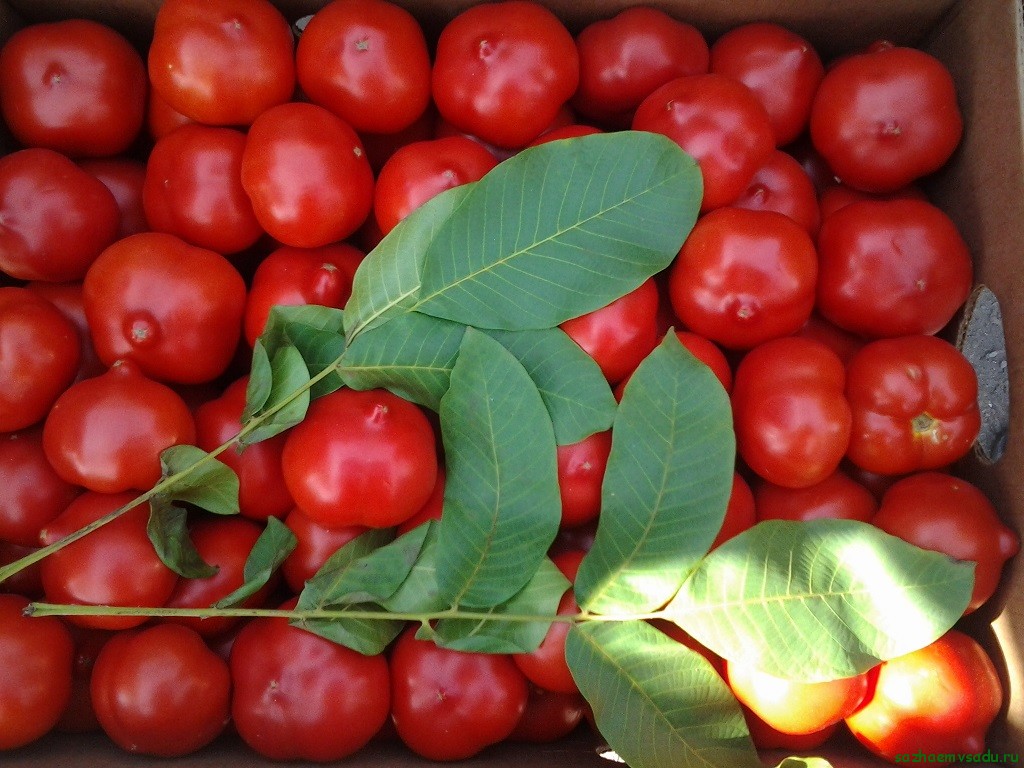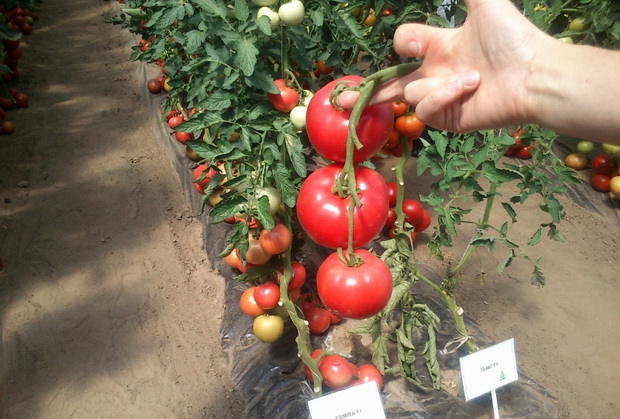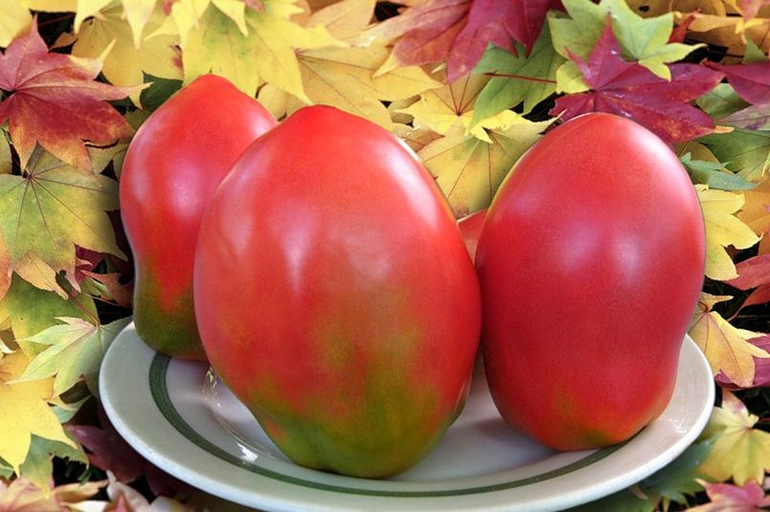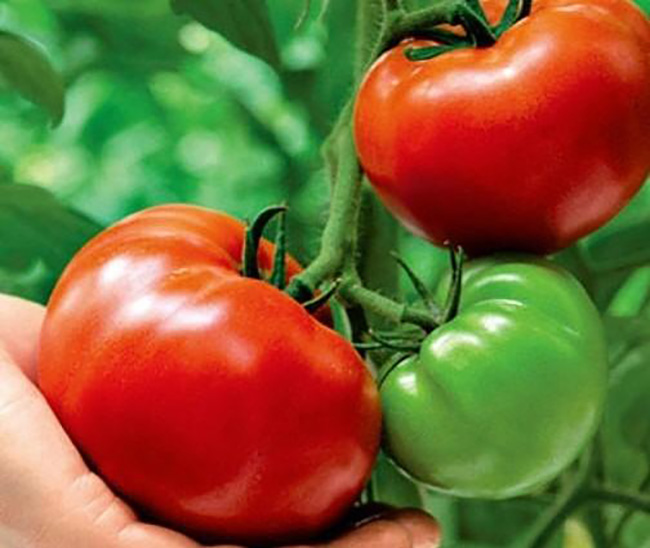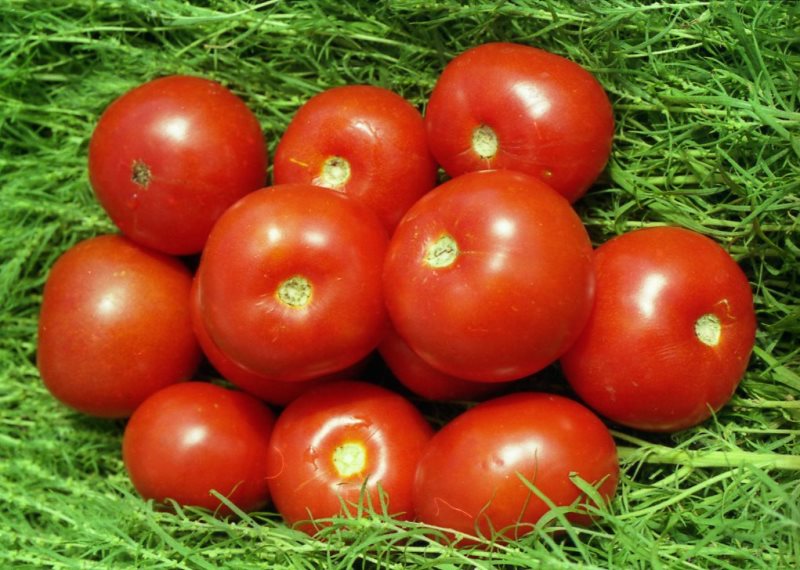Content:
Labrador is a variety that has many advantages. With an extremely small number of shortcomings, it is known for its extremely early ripening period and high unpretentiousness. They give a large stable yield for a long time. Medium-sized red fruits are harvested from the plant, which are applied fresh and preserved. This variety was bred in Russia in the last decade and is young in comparison with other varieties of tomatoes.
Tomato Labrador: characteristics and description of the variety
Plant height is genetically predetermined, about 60 cm. It ripens very early, 80 days (2.5 months) from the day of sowing. Bushes of the Labrador variety have a few green leaves of a characteristic dissected shape. Clusters begin to form no lower than the seventh stem leaf.
The fruits are round, slightly flattened with many inner chambers, relatively small: the average weight of one tomato is about 110-120 g. The maximum weight of the fruit is up to 150 g.
The best yield gives a shoot with five artificially selected strong brushes, and the appearance of extra branches and shoots on the plant must be suppressed in order to preserve high fertility.
Agrotechnics
Labrador tomatoes are versatile and unpretentious: the variety is successfully grown in the open field and in greenhouse conditions.
For antiparasitic prophylaxis, seeds are treated with a disinfectant solution from a manganese solution or other household disinfectant. Treatment with formulations for activating germination from gardening shops or a solution of honey will have a beneficial effect.
Sowing is carried out in the last days of March or early April at room temperature from 20 to 25 degrees.
In central Russia, pre-planting of seedlings in special boxes is customary. In this case, the seedlings are grown for two months at a temperature of 18 degrees, then they can be planted in open ground.
In the place of permanent habitat, it is preferable to plant a Labrador tomato at a distance of half a meter. No more than four plants should be free per square meter.
At the end of June, at the age of three months, the plants begin to bear fruit. The crop ripens in one wave, usually the entire existing branch as a whole.
Garter and pinching (removal of side shoots of the stem) is not required, the plant will bear fruit well without these operations. Fixation to a support is recommended when the fruit begins to form and exert strong pressure on the stem and branches.
Despite the plant's resistance to diseases, it needs to be treated with insecticides - chemical preparations that protect the tomato from insect pests.
Advantages and disadvantages of the variety
| Advantages | disadvantages |
|---|---|
| Very early ripening | Fresh fruits spoil quickly |
| The variety is not picky about environmental conditions | Thin skin of fruits |
| High resistance to fungi, in particular, late blight | |
| High yield | |
| Excellent taste | |
| Fruiting at a time |
Thanks to its early development, the Labrador Retriever successfully avoids pathogens such as late blight.
The disadvantages of the variety are not critical and can be corrected by an attentive farmer, and thanks to the abundance of positive aspects, the Labrador will be one of the best solutions for the garden.



